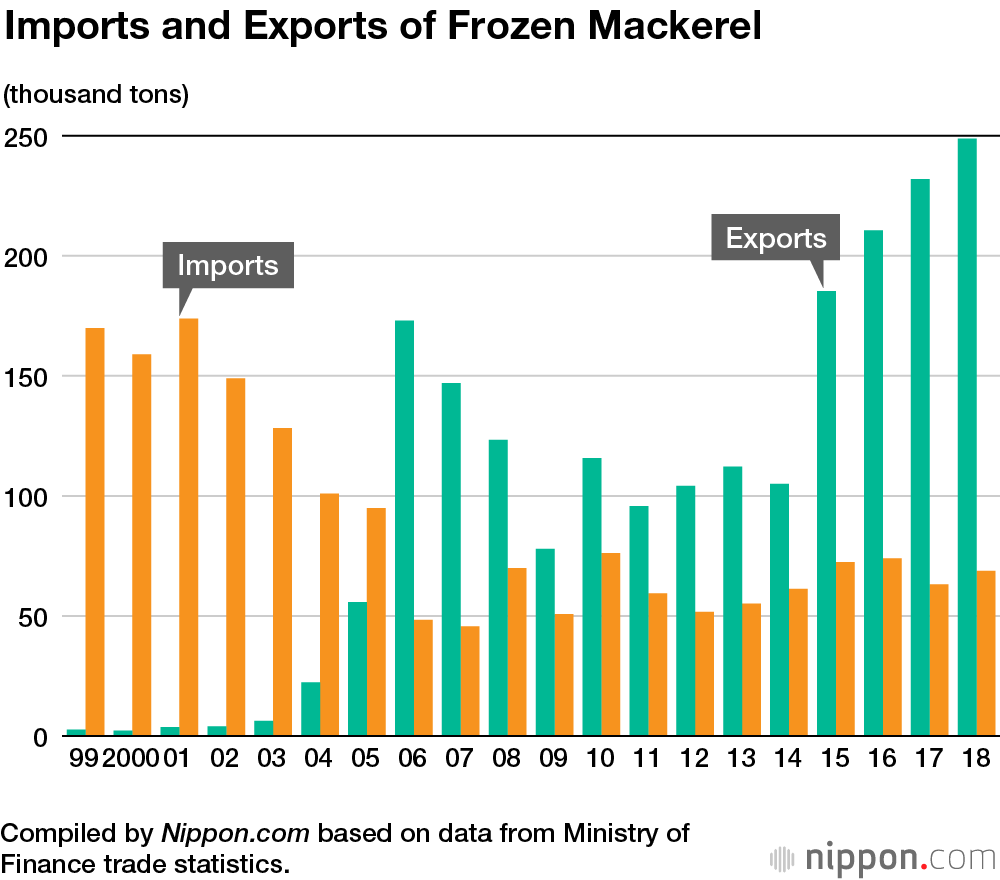
African Demand Drives Boom in Japanese Mackerel Exports
Economy- English
- 日本語
- 简体字
- 繁體字
- Français
- Español
- العربية
- Русский
Mackerel is a classic ingredient in Japanese cuisine, whether simmered in miso sauce, grilled with salt, or cured. What might not be so well-known is that Japan is also a major mackerel exporter.
Japan imported 170,000 tons of mackerel in 1999, while exports were a mere 2,000 tons. However, from 2004 the volume of exports began rapidly increasing, surpassing imports in 2006 to reach 170,000 tons. That year, 47,700 tons of mackerel was exported to China, 28,500 tons to South Korea, and 23,300 tons to Thailand. These three Asian countries alone accounted for 60% of total exports.
In recent years, African countries have become increasingly important export destinations. In 2018, 50,500 tons were exported to Nigeria, 45,700 tons to Egypt, and 25,700 tons to Ghana, as African countries accounted for more than 50% of the total export volume of 248,700 tons. The mackerel exported to the African market is smoked for use as preserved food and used as an ingredient in stews.
Mackerel used to be exported to Africa from Europe. However, prices have risen, due to stricter resource management that means only larger fish can be caught in Norway and other European countries, making it prohibitive for the African market. Instead, smaller, inexpensive mackerel that does not enter the Japan market is now being exported to African countries.
Incidentally, 90% of mackerel imported into Japan is from Norway. Although resource restrictions mean large, fat-rich mackerel has a high price, it is very popular.
(Translated from Japanese. Banner photo © Pixta.)


